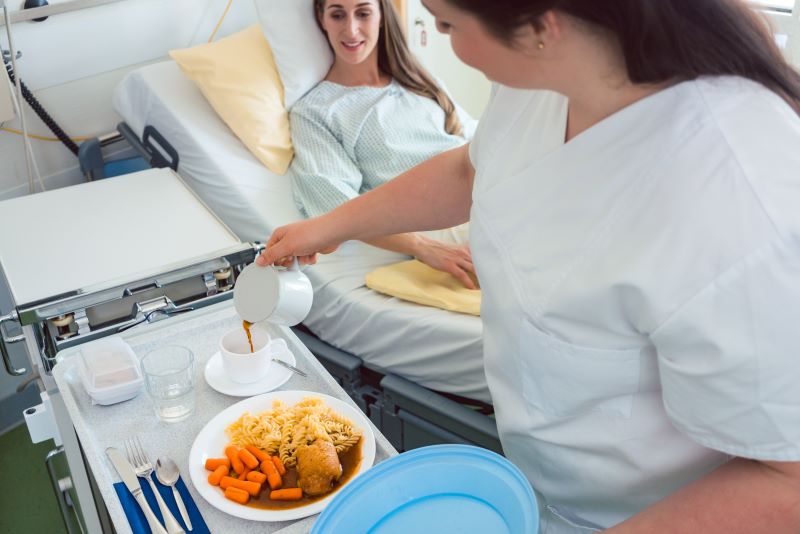When it comes to food safety, it’s always important to be vigilant. Still, when you’re a food safety certified manager in a Minnesota institution that provides meal service for elderly residents, patients recovering from surgery, or those with special needs, it’s vitally important to be diligent in keeping your food safe. This week, we’d like to discuss a few extra precautions that food safety managers in medical institutions may wish to remember during their daily routine.

Food Safety Managers Tips for Medical Institutions
CFPMs in hospitals or elderly care facilities should focus on these critical issues:
- Properly sanitize utensils and prep surfaces
- Thoroughly wash all fruits and vegetables
- Be vigilant about tracking guest’s allergies
Our first tip is to ensure all utensils, preparation surfaces, and serving wares are adequately sanitized. This idea may seem deeply ingrained in your daily habits since you completed your first food safety class, but it’s crucial to recognize the risks associated with careless sanitation. One such danger is over or under-mixing your sanitizer solution. The under-mixed solution can leave bacteria on surfaces that will come into contact with prepared foods. In contrast, overmixing the solution can result in patients ingesting dangerous chemicals, putting them at risk of experiencing harmful effects from bleach, ammonia solutions, or iodine. Make sure to keep sanitizer test strips readily available to test your solution regularly.
Secondly, food safety managers in medical care centers must ensure that all raw fruits and vegetables are washed thoroughly, even those claiming to be ready to serve. Fruits and vegetables can come into contact with dirt, fertilizer, and other hazards before reaching your facility. They are often stored unsealed in warehouses before transport and loosely stored when shipped. Many bagged greens such as lettuce and spinach claim to be ready to eat, but some potential for contamination does exist, and since you’re serving meals to those who have a high risk of foodborne illness, it may be wise to take the extra precaution of washing all greens.
Always Track Guests’ Allergies
Our third suggestion for food managers in medical facilities is to be extremely diligent about keeping records of their guests’ allergies. Many institutions face a high turnover rate as one patient departs and another arrives. All too often, allergy information is overlooked during these transitions. Detailed records of each guest’s personal needs will help avoid accidents. It may even be a good idea to eliminate high-risk items such as nuts and shellfish from your facility altogether.
With most safe food training focusing on the hospitality and food production industries, we’d like to know what food-safety issues arise for certified food safety managers of food service in institutions such as assisted living facilities and medical care centers. Are there any aspects that current safe food training overlooks regarding your situation?


